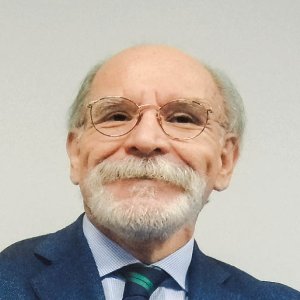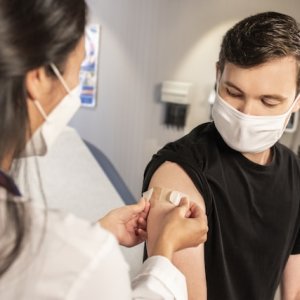A Crusade Against Obesity, Diabetes

STORY INLINE POST
Q: Last year, you launched liraglutide under the name of Saxenda. How has the medical market received this medication?
A: Saxenda is our latest approved treatment for obesity. In Mexico, it has great appeal and has enjoyed a positive reception but it still faces the same challenges as other medications, such as adherence to treatment.
Q: What joint ventures is the company developing to place this and other innovative products closer to low income individuals?
A: We are looking for ways to make our innovation accessible to a wider audience. We understand that many people are treated in the public sector, where options are limited. Therefore, we have entered into negotiations with large institutions to make our products more accessible for people with diabetes and obesity in Mexico.
Q: Novo Nordisk specializes in diabetes and obesity. What is your role in shaping healthcare in a population that is becoming increasingly diabetic and obese?
A: We contribute in two different areas. On one side is as a commercial entity, where we develop innovative treatments and bring them to market, and we try to commercialize them in a way that makes them more accessible to more patients.
We also contribute to the treatment of diabetes through education and with initiatives focused on prevention. One example is Cities Changing Diabetes, for which Mexico City was the first city in the world to join and in which we participate with several stakeholders. Our goal in this regard is the development of infrastructure and the dissemination of knowledge. In addition, Novo Nordisk works with different players to make sure that there is broader access not only to our medications but tobetter diabetes treatment overall both in the public and private spheres.
Q: How can local regulations be improved to promote faster access to market?
A: COFEPRIS’ efficiency is among the highest that I have experienced. It has gone a long way in terms of approving products in an efficient manner. When it comes to access, the biggest challenge is who pays for the treatment after it reaches the market. I see a lot of will in some of the big institutions to offer more innovative products but it is always a matter of funding.
Q: How could collaborations in the industry help improve accessibility for these types of products?
A: Together with AMIIF we have opened a dialogue with public players to propose different schemes for funding new medications. Institutions have been open to this and, although we have not made quick progress, the willingness to move forward is there. We all understand the need; it is just a matter of finding the right mechanism.
It is also a matter of changing the mindset regarding treatment. For instance, in the treatment of diabetes, Mexico has been effective in reducing prices in the public market for a specific treatment. This yields savings but also creates a problem in introducing novel treatments: switching the current treatment to a better treatment would mean having to pay three to five times more what is paid now. Health institutions should analyze who is the group of selected people who have the greatest need to obtain the benefits of our product. We are working on pilot projects to pick the target population that will potentially be most benefited from our most innovative medicines and it seems that the public sector is showing more interest in investing in these special populations.
Q: What are the main benefits and drawbacks of tailored financial schemes for pharmaceutical companies?
A: I think we need tailored schemes for different therapies and for different institutions based on their budget availability, their needs, the composition of the population and the outcomes, among others. There is no perfect mechanism; this depends on the therapy, the patient population and the financing needs and facilities of the institution.
Q: How do you manage and encourage patient adherence to medicine?
A: Mexico’s adherence rates are among the lowest that I have seen in the world, even for chronic diseases. To get the patient to adhere, it is not enough to have a fantastic product and a good price. There are many sociological aspects that are not solely related to the product. When it comes to chronic diseases, we must create awareness among people that they are making an investment in themselves and in their future.
We launched a patient support program in early 2018 called Nuevo Yo (New Me). Diabetes or obesity should not hinder people living with these conditions. In fact, they should take it as an opportunity to establish new routines to live a new life. The program has been very successful and in less than six months we had around 4,000 people subscribing to the service.
Q: What will the treatment for diabetes look like in 10 years?
A: In the future, we will have more obese people with diabetes. Unfortunately, epidemiology, aging of the population and human physiology work against us. Even if we focus on prevention, for at least the next 20-30 years we will continue to see a rise in the number of diabetics. In terms of medicine, I expect more products focused on providing holistic benefits to patients.
Q: What are Novo Nordisk’s expansion plans for Mexico and how is the company increasing its presence in the market?
A: Our portfolio for diabetes is doing extremely well, both in the private and public sectors. The public sector is slower in adoption because we know that we have to overcome access barriers. Still, we are growing at double-digit rates.
The other area where I foresee expansion is obesity. Unfortunately, obesity treatments in Mexico are underdeveloped. That is why we are investing both in increasing our commercial presence and in developing infrastructure. We need to invest as a company but we also have to convince Mexico to invest because obesity is a ticking time bomb. Today it is a healthcare emergency but in 10 years it will be a financial emergency.
Also, Novo Nordisk has a very strong commitment to treat hemophilia. It is a rare disease that affects a small population. We estimate that there are approximately 6,000 people in Mexico being treated but the number of people living with hemophilia might be twice that.






















